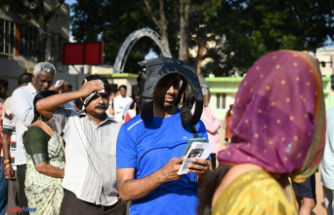However, cooperation has been difficult to find.
New York, Ohio, and Virginia have seen their first meeting this year, with commissions dividing into partisan groups to create competing redistricting maps , based on 2020 census data. Some activists who supported reforms were disappointed by the divisions. They also highlighted the difficulty of purging politics from the once-a decade process of realigning the boundaries for the U.S. House and state legislative seat.
The GOP will continue to be the preferred party in the new Senate and state House districts in Republican-led Ohio. Democrats in New York can still draw the maps they want. A potential blockade in Virginia could lead to a halt to the process.
"It's probably predictable, that this is sort out how it pans out," stated Alex Keena (a Virginia Commonwealth University political scientist who has studied redistricting as well as gerrymandering).
Redistricting may have serious consequences. Changes in the district lines could make it more likely that a party has a majority or divide its supporters into multiple districts, reducing their power. To regain the U.S. House, Republicans must win just five seats in 2022. This could decide the fate of President Joe Biden’s remaining agenda.
Redistricting has been a task of governors and state legislators throughout American history. Governors have an incentive to draw lines that favor their party. In recent decades, public awareness of gerrymandering has increased and voters in increasing numbers have given the task to special commissions.
Some commissions, such as the ones in Arizona, California and Colorado, are composed entirely of citizens. They have final say over what maps should be enacted. Others, like Ohio and Virginia, have politicians as members. Or require that their maps be submitted to the legislature to final approval. This is the case in New York and Utah.
If the Democratic-led Legislature of New York rejects the work done by the new commission, which includes four Democrats and four Republicans, and two independents, then the lawmakers can create and pass their own redistricting plan.
The chances of that happening increased when Republicans and Democrats on the commission failed agree to release competing versions of new maps, for the U.S House, state Senate, and state Assembly.
Nick Langworthy, the Chairman of the State Republican Party, blasted Democratic maps as "wildly-gerrymandered" while accusing Democratic commissioners for refusing compromise.
Jay Jacobs, the Chairman of the State Democratic Party, countered that there was absolutely no reason to "bend over backwards", in order to win as many Republican seats possible. He said, "We'll play fair, but only to a point."
Jennifer Wilson, deputy director of League of Women Voters of New York, was frustrated by the commission's division. They supported the 2014 ballot measure creating the commission and encouraged people testifying at the public hearings.
Wilson stated, "It almost feels as a slap in our faces to us and all those people who took the time to submit comments -- took the time out of their everyday lives to do this -- when it was very obvious that there was no regard to any of those comments."
In Ohio, frustration is also mounting. A commission that was dominated by Republican elected officials voted last week to approve a state legislative redistricting program they supported. The state constitution restricts the use of the plan to four years because it had no Democratic support.
The panel was criticized by Democrats for calling the maps unfair. However, Republican Senate President Matt Huffman claimed that Democrats were pressured by special interests not to support a redistricting program that could have lasted for the whole of the next decade.
Huffman stated that the new map would likely result in 62 Republican seats for the Ohio House and 23 for the Senate. This is a drop of just a few from the GOP supermajorities. Experts believe the state's voters are more evenly split, with 54% Republican and 46% Democratic.
The partisan map was approved despite the fact that more than a dozen public hearings were dominated by testimony of Ohio residents who claimed the current gerrymandered mapping system has left them out in cold.
"Too many of our rights have been ignored and we have not had much say in who represents our interests and watched helplessly while laws were passed that harm our families and ignore what our needs are," Areege Hammad of CAIR-Ohio (a civil rights organization for Muslims) testified.
She stated that the area around the Islamic Center of Cleveland is split into multiple congressional districts and statehouse districts.
She stated that "Due to the way districts are drawn, our elected representatives have no incentive to respond to our concerns or be receptive to our concerns."
The first draft of the Michigan citizen redistricting committee's new state Senate and U.S. House maps was released this week. They are still working on a state Housemap. It plans to solicit more public comments on its proposals, with the goal of finalizing maps before the end of this year -- well ahead of the Nov. 1 deadline as set by the constitutional amendment approved and ratified by voters.
The Michigan panel, which includes four Democrats and four Republicans as well as five independents, has not yet descended into partisan encampments. Keena suggested that one reason could be the fact that Michigan's commission does not include any politicians, and therefore no power for the Republican-led Legislature override its work.
Two mapmakers in Virginia were hired by Democrats and Republicans to create rival plans. The 16-member commission has four legislators and four citizens representing each major party. The state Supreme Court will decide if the commission cannot agree or if the Democratic-led General Assembly rejects the maps.
The way commissioners respond will decide whether reform efforts succeed, according to Liz White, executive director at OneVirginia2021, who supported the ballot measure that created the commission last year. She hopes panelists will find a way to "marriage" the two proposals.
White stated that there is a danger that the two balanced sides will end up in gridlock. "The hope is that citizens will make sure that this doesn't happen," White said.
Even if the commission is stuck, the new process could still be considered an improvement over its predecessor, Keena of Virginia Commonwealth said. The public now has access to deliberations and divisions that would otherwise have been kept private.
He said, "We'll be able to look back at this type of experiment and see which works and which doesn't," "Hopefully that will lead to better future reforms."












